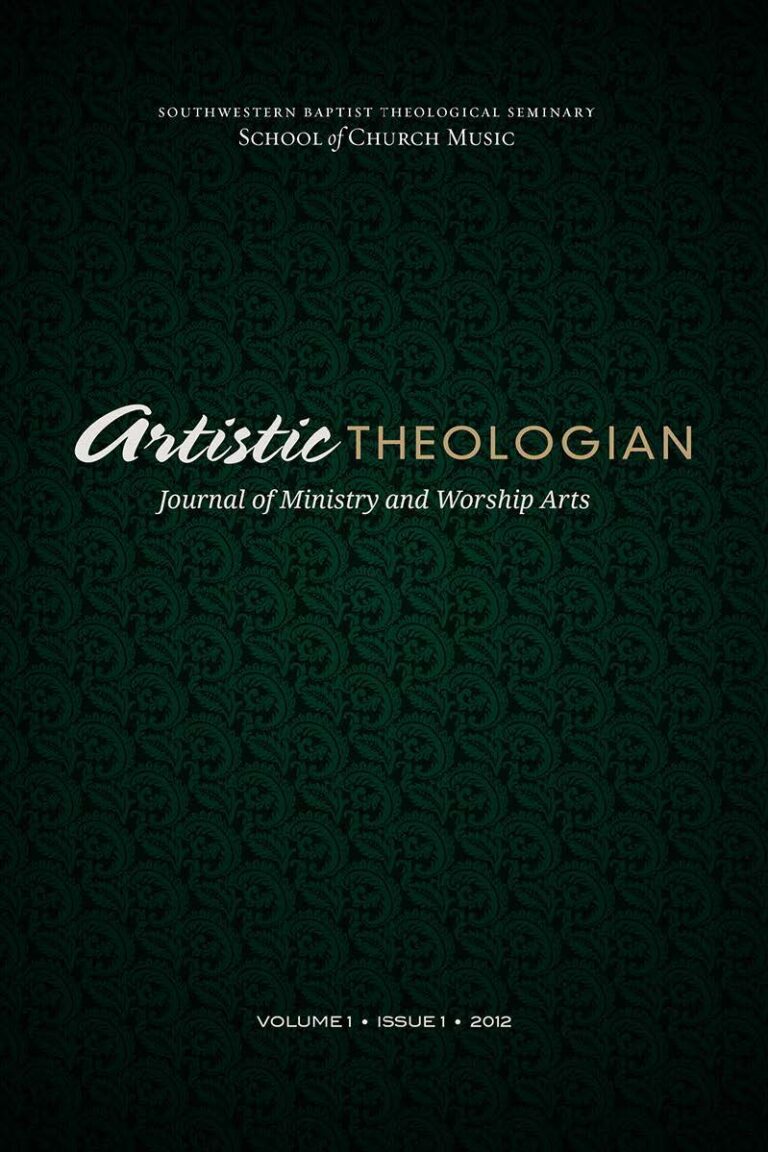
Introducing The Artistic Theologian
Artistic Theologian
Volume 1, Summer 2012
Editor-in-Chief: John E. Simons
Preaching as Worship: An Integrative Approach to Formation in Your Church, by Michael J. Quicke. Grand Rapids: Baker Books, 2011. 279 pp. $17.99.
A common refrain among church musicians is the desire for their pastors to understand and employ many of the theological concepts regarding worship and music taught in seminaries and schools of music. One of the most important skills a church musician can learn is successful navigation of the often-challenging waters of the pastor-musician relationship. Preaching as Worship: An Integrative Approach to Formation in Your Church by Michael S. Quicke proves to be an important tool providing a common framework for such dialogue. Michael Quicke is the C. W. Koller Professor of Preaching and Communication at Northern Seminary near Chicago. He is also the author of 360-Degree Preaching and 360-Degree Leadership. He attributes many of the principles of biblical worship described in his book to the influence of Robert Webber, who taught at Northern Seminary from 2000 until his death in 2007. Any reader familiar with the work of Webber will see clear evidence of his influence upon Quicke’s thought and writing.
Quicke divides Preaching as Worship into three sections, where he attempts to lead pastors from what he terms a myopic view of worship towards a rich picture informed by biblical principles, historical practices, and a balanced approach to the elements of corporate and private worship. His fundamental goal is to enable pastors to understand the place of preaching within the entire doxological life of the congregation. He provides helpful admonitions against pitting the sermon against other service elements, specifically music. Quicke’s attitudes toward music, preaching, and the ordinances demonstrate considerable balance and thoughtfulness.
The author demonstrates his familiarity with notable worship theologians such as Harold Best, James Torrance, Don Saliers, and Marva Dawn. These influences become apparent in the fifth chapter titled, “Preaching in 360-Degree Worship.” Adapting a model previously employed in his other books, the author diagrams the movement in worship on several levels. He emphasizes the Trinitarian relationship of love shared by the Father, Son, and Holy Spirit and demonstrates the influence of this dynamic upon corporate worship. The model continues by placing the role of proclamation within this self-perpetuating cycle of initiation, proclamation, and worship. “Preachers worship when they preach, hearers worship as they listen, and all participants worship as they respond. Worship is the primary dynamic in which preaching engages—the integrator of preaching within God’s big picture” (89). His systematic approach enables preachers to understand the role of the sermon within the larger dynamic of revelation and response in corporate worship.
Theology plays a prominent role throughout the text, but not at the expense of praxis. Quicke attempts to provide a framework for practical application through the use of what he terms the “Question Toolbox.” Found throughout the text, this series of six questions deals with the broader concepts of “gift, magnification, Scripture, audiences, community, and mission” (173). The author uses these questions to guide the development of a process of preaching that is theologically informed, shaped by a Trinitarian pattern, and doxologically rich. These practical applications are among the strongest contributions that this book will make to worship studies in general and homiletics in particular.
The author’s task is ambitious and perhaps too large for a single volume. The same elements that make the book valuable—its grasp on biblical foundations and theological concepts—provide its greatest shortcomings. Quicke attempts to integrate and distill all of these concepts into one model for preaching. This effort fails on some level because of the inherent complexity in such a task. Specifically, his treatment of spiritual formation through proclamation perhaps would be best served in a separate work.
Preaching as Worship concludes with a description of a multi-phase process by which pastors and worship leaders can develop a pattern of worship and preaching that takes the shape of principles previously mentioned. Titled the “worship swim,” Quicke describes this as the immersion “in the same spiritual reality of receiving and giving back within the grace and fellowship of God’s three persons, growing together as his community” (180). This metaphor proves helpful in demonstrating how preaching should emerge from the congregation’s ongoing engagement with Scripture and God’s revelation through corporate worship. Pastors and musicians will find much benefit in working through the challenges of worship and sermon design by utilizing his “worship swim” methodology.
Michael Quicke largely succeeds in his task of developing a theology of preaching and worship based upon biblical principles. Preaching as Worship will prove to be a valuable resource for pastors and musicians alike. The text can serve as a source for joint study and application and makes a significant contribution to the literature of preaching and worship studies.
David Toledo
First Baptist Church
Keller, TX





